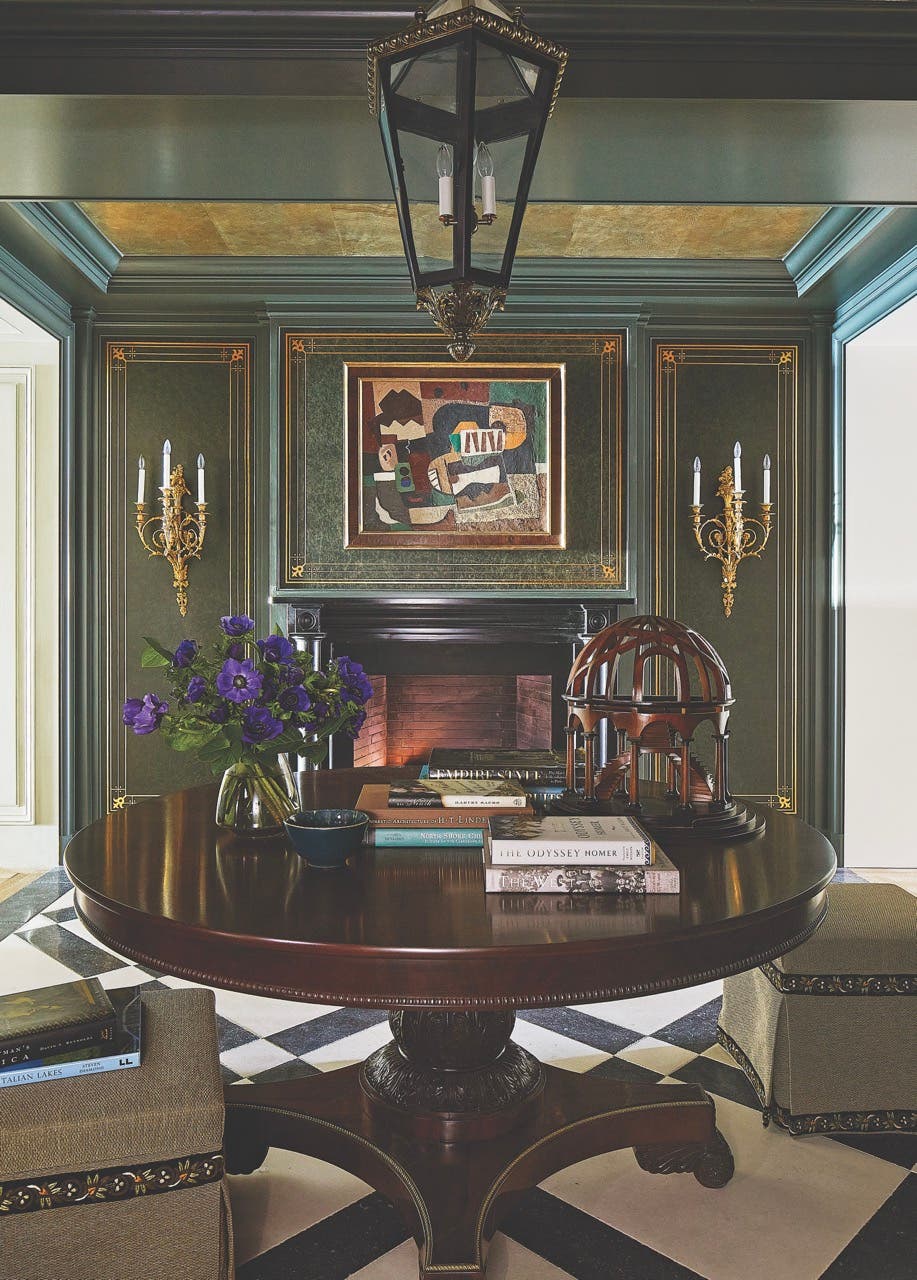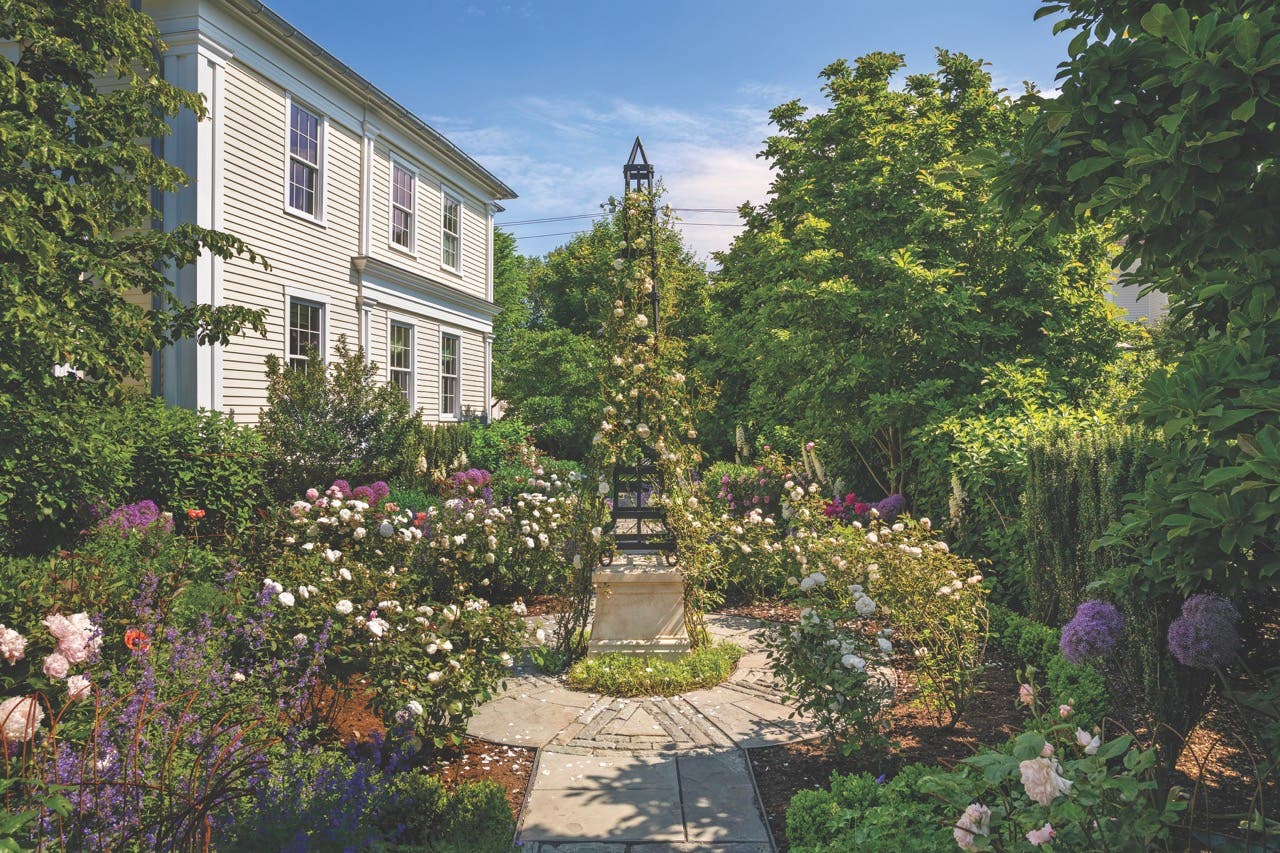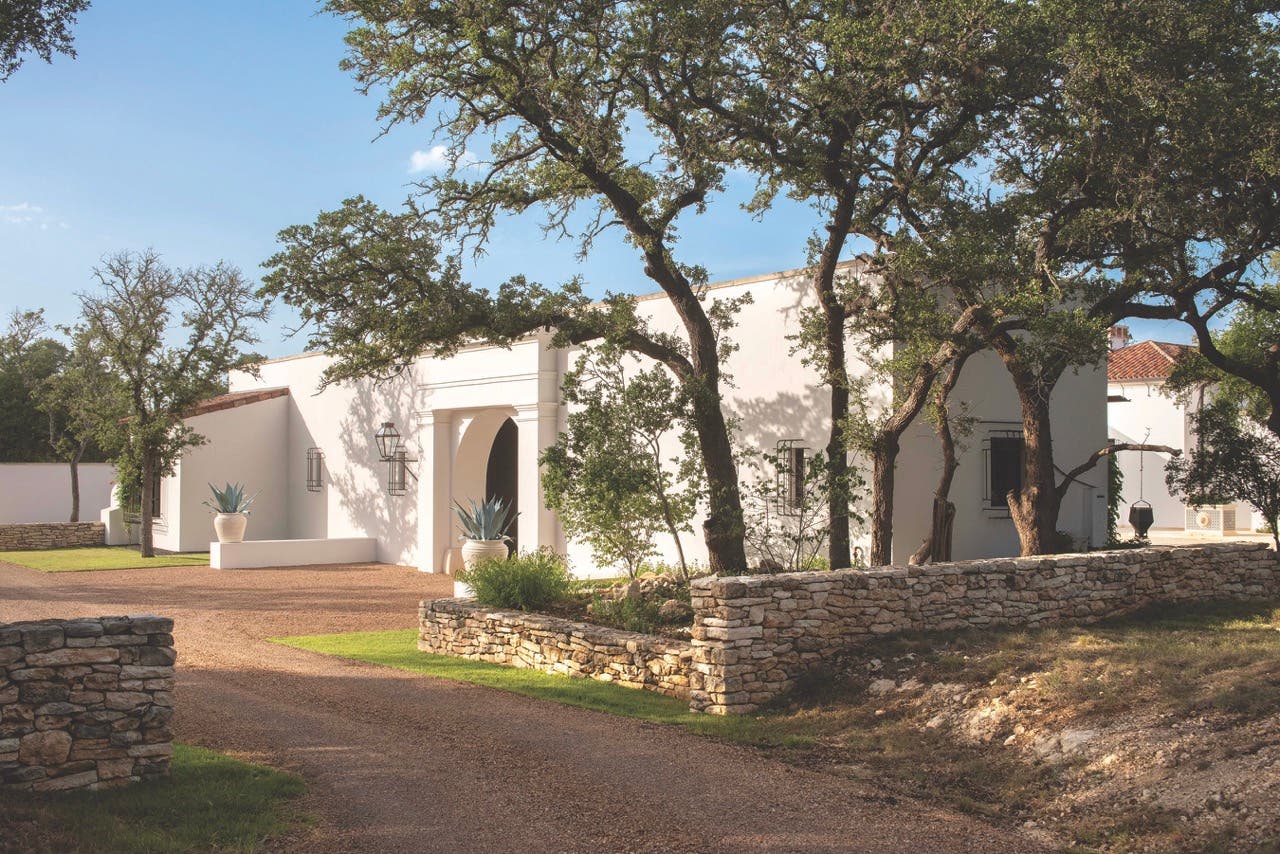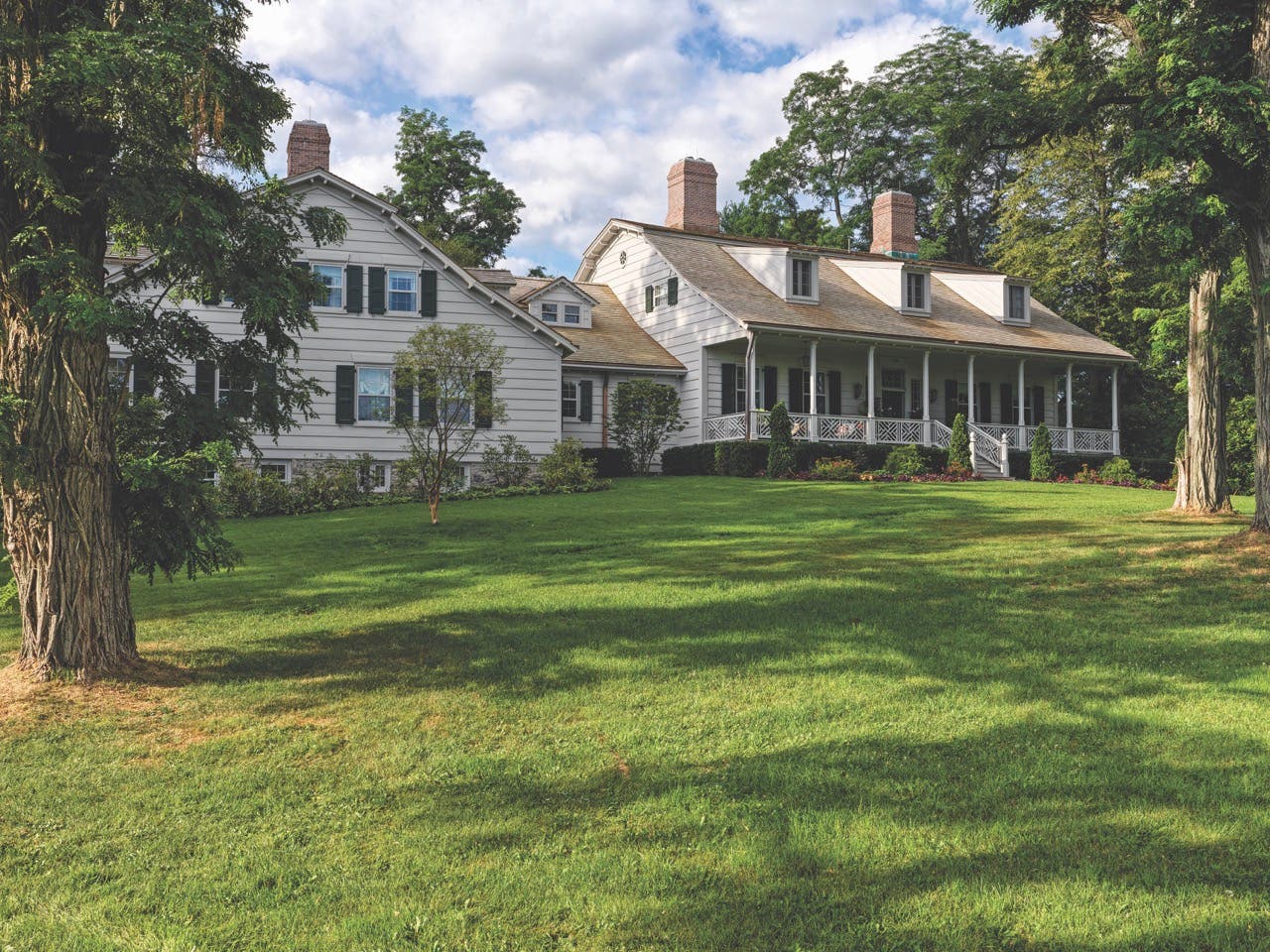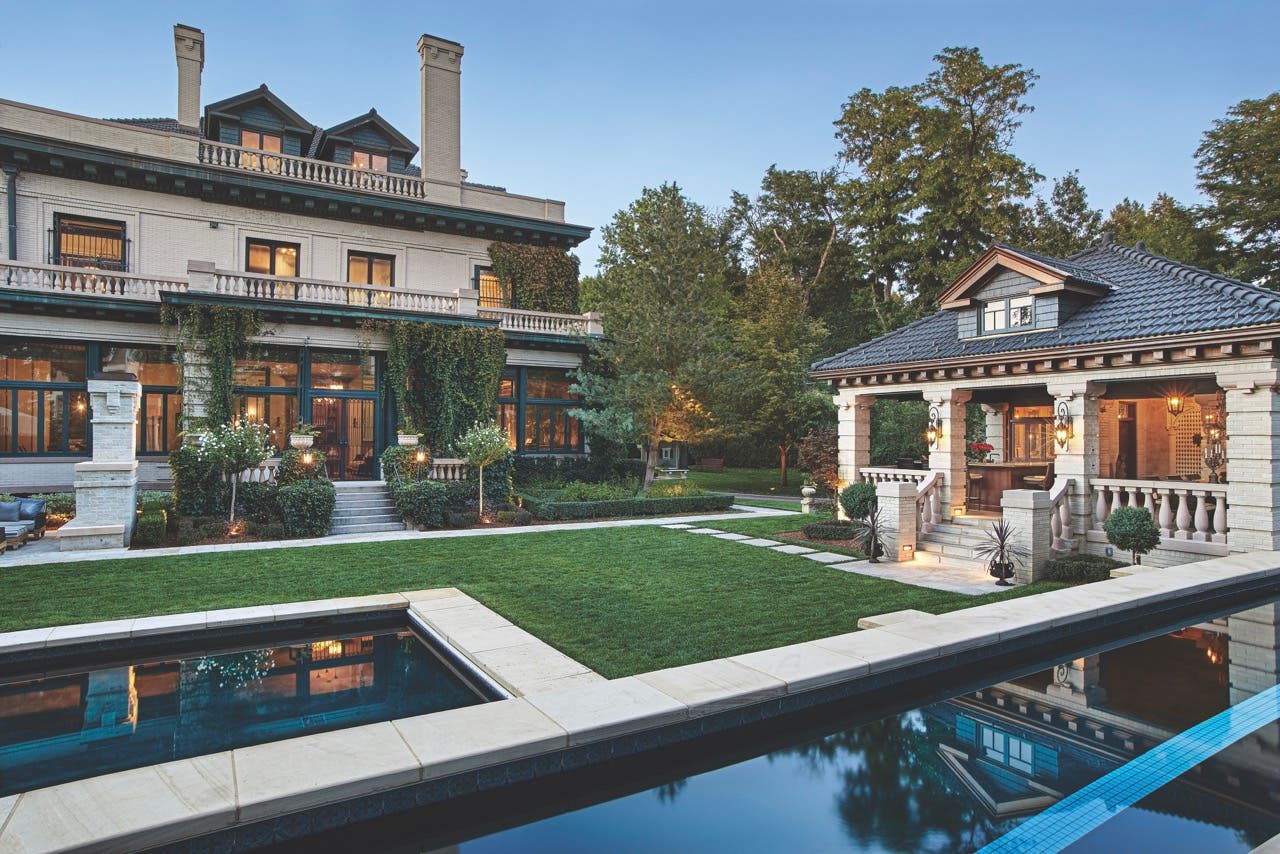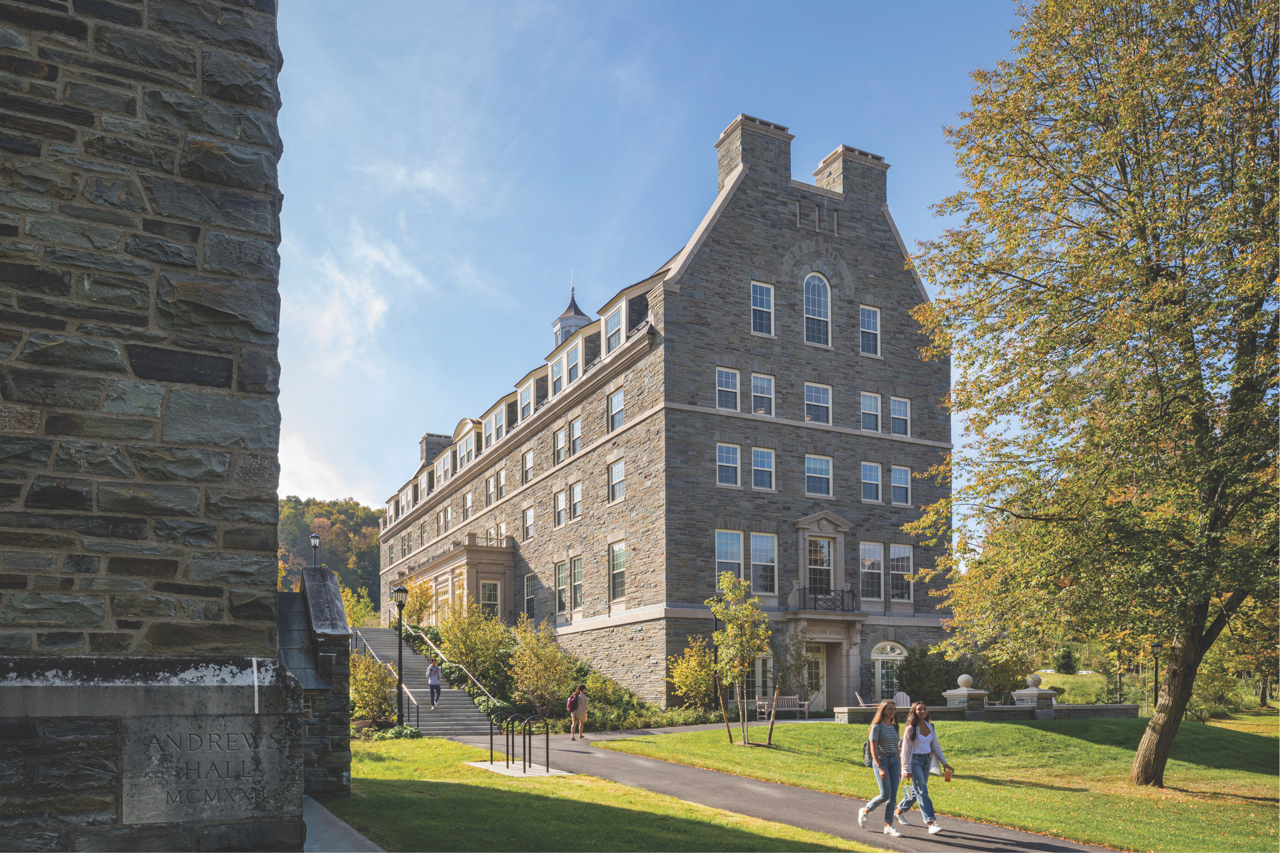
Palladio Awards
Jane Pinchin and Burke Residence Halls – Robert A.M. Stern Architects LLP
On a prominent site on the campus of Colgate University, a new pair of residence halls represent a significant and sensitive expansion of the school’s student housing program.
The two 39,550-square-foot buildings, designed by Robert A.M. Stern Architects, are keystones of a new quadrangle also designed by the firm. They respect the 200-year-old campus plan and its traditional architectural vernacular while establishing a new standard for responsible growth.
The team—senior partner Robert A.M. Stern, project partners Graham S. Wyatt and Preston Gumberich, project senior associate George Punnoose and project manager Jennifer Bailey—designed the buildings to reinforce Colgate’s unique identity. Additional key design team members included Carly Bathan, Jules Gianakos, Mason Roberts, and Marek Turzynski.
Artfully woven into the fabric of the Hamilton, New York, campus, Jane Pinchin and Burke Residence Halls, which house 208 first-year and second-year students, take their architectural cues from a pair of historic buildings—West Hall, the campus’s first structure, which was erected in 1827 by students and faculty members using stones from Colgate’s own rock quarry, since closed, and its twin, East Hall, completed in 1834.
“East and West Halls are simple foursquare buildings with local bluestone facades and pitched roofs, classically inspired but with a powerful simplicity,” Wyatt says. “We wanted the new residence halls to complement that character, rather than to stand at odds with it.”
The two five-story buildings also complement each other; subtle differences give each a distinct character.
“We designed each residence hall with its own uniquely ornamental cupola (which truly functions as part of the mechanical exhaust system) and two-story cast stone entryway to add a subtle note of individuality although the two are otherwise quite similar,” says Gumberich, adding that the idea to illuminate the cupolas came from the university’s president, who wanted them to enter into a dialogue with the five other illuminated cupolas that sit atop legacy buildings on the campus.
The two residence halls embody the university’s organization as “residential commons,” which calls for communal spaces to foster student socialization and collaboration.
Thus, their ground-floor lobbies access shared seminar and study rooms. Upstairs, there are faculty advisor suites, communal kitchens, and student lounges that open to granite-paved patios at each end of the new quadrangle, which is centered on an elliptical lawn.
The upper three floors house student rooms, primarily doubles. And they are, by design, spartan, to encourage students to spend time together in the communal spaces.

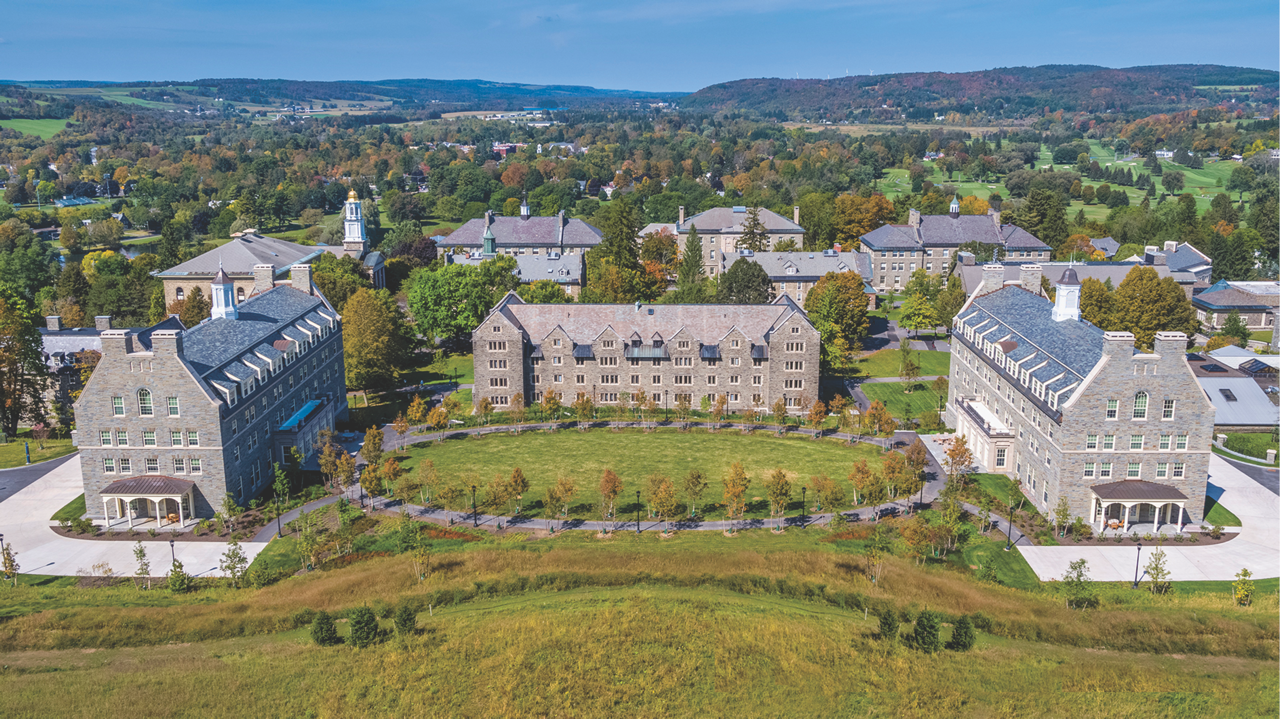
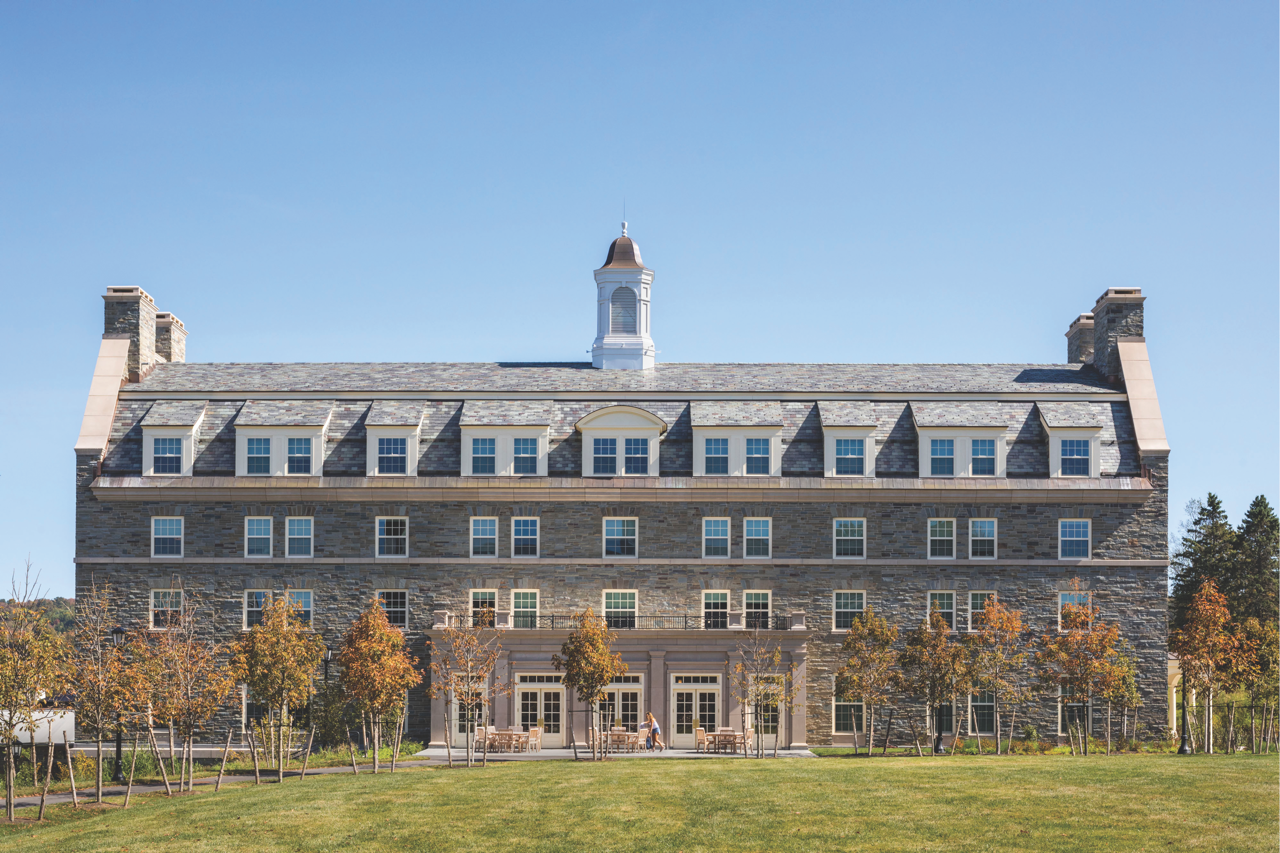
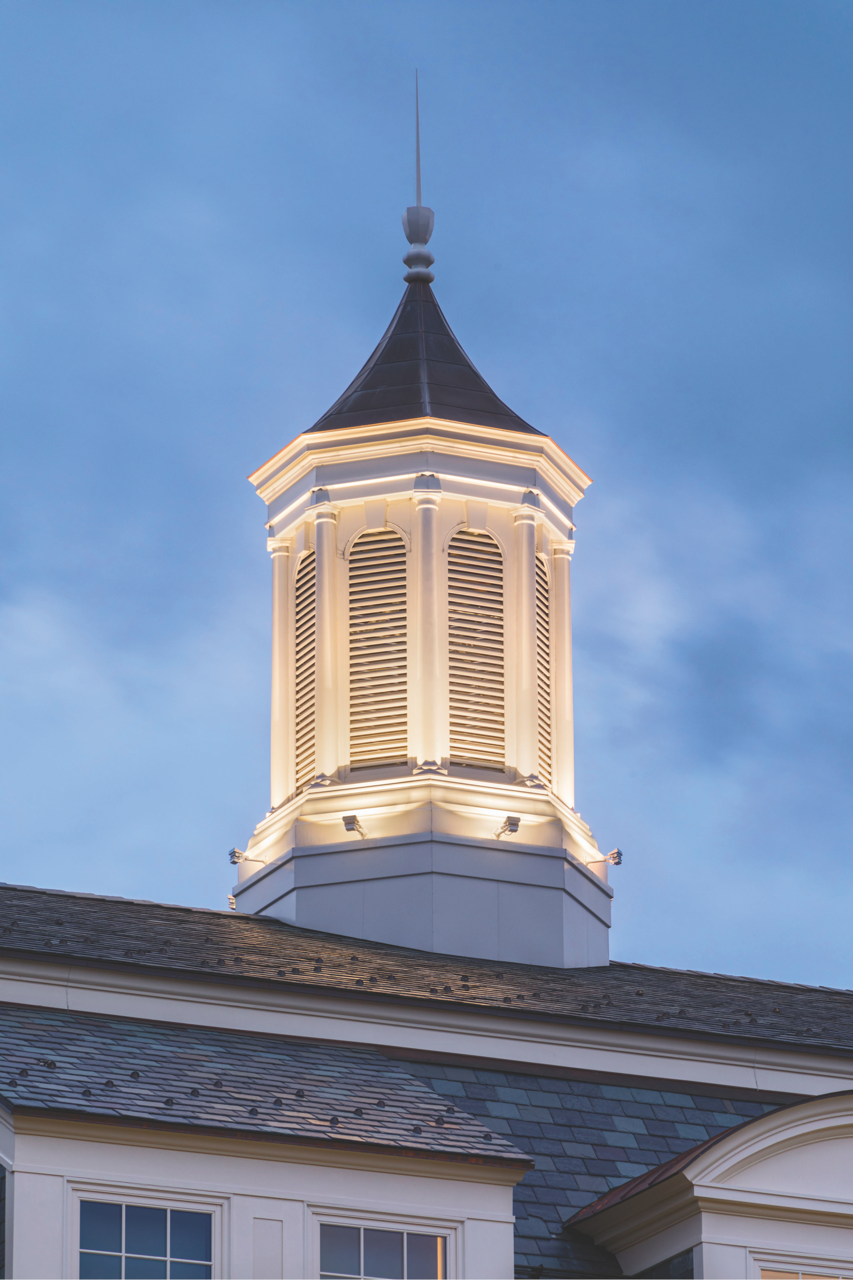
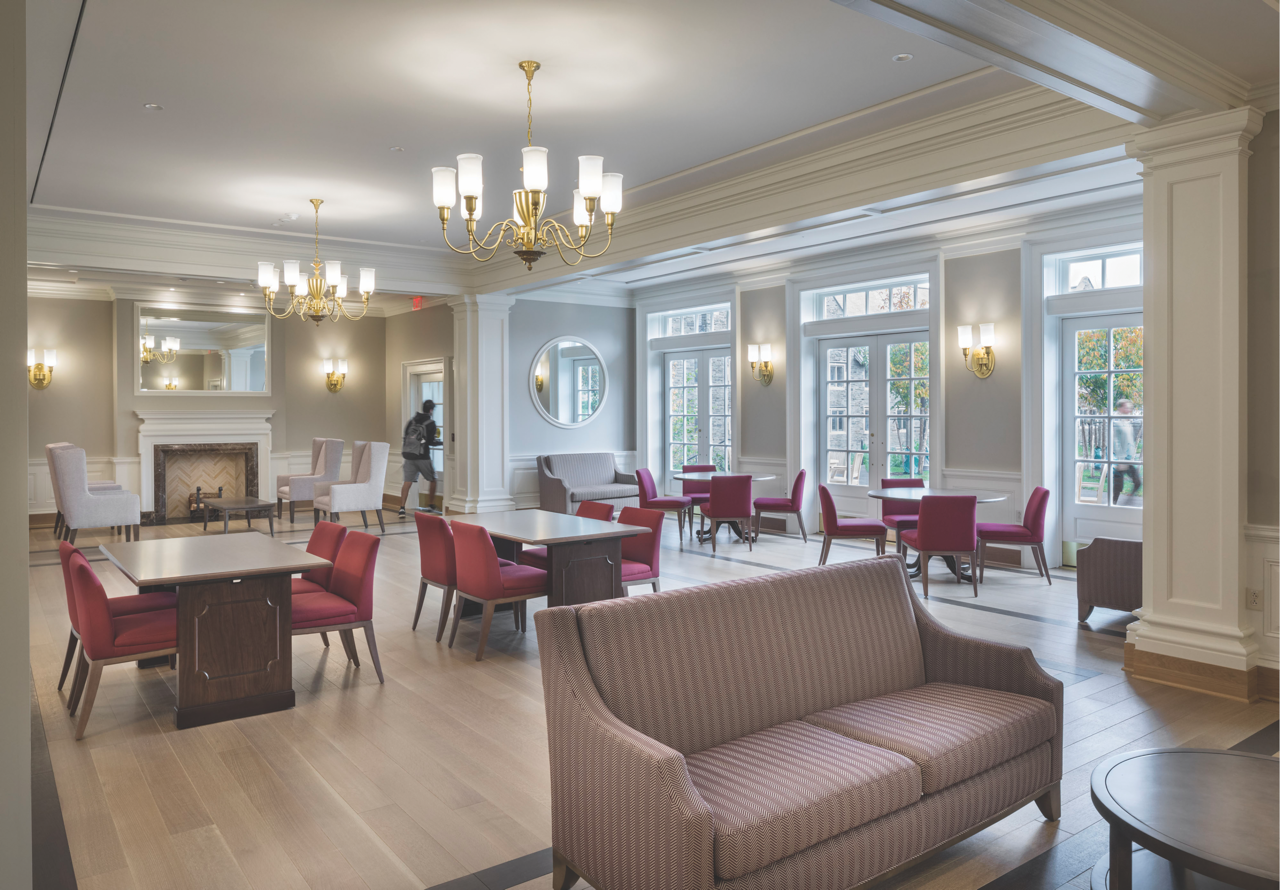
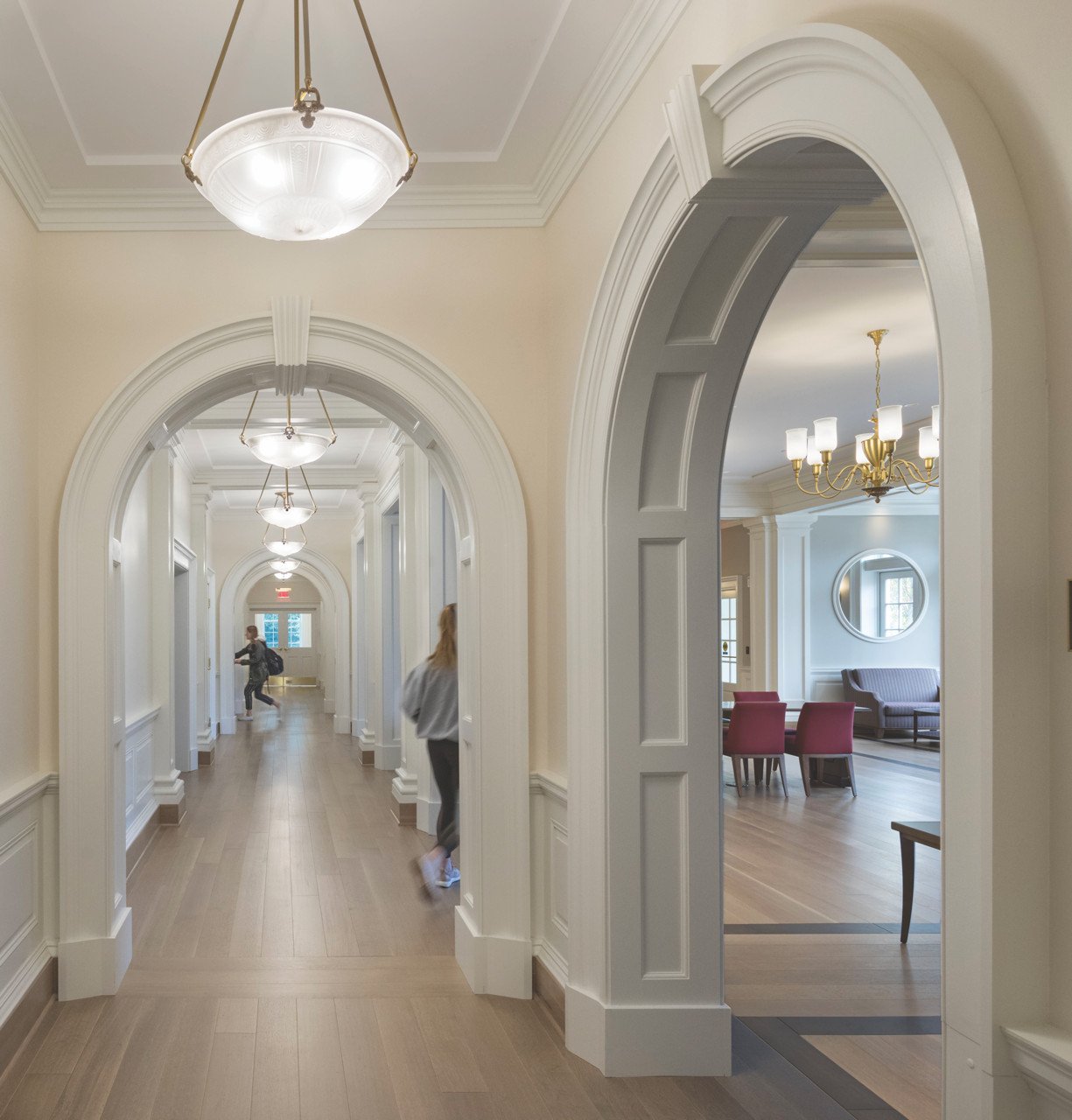
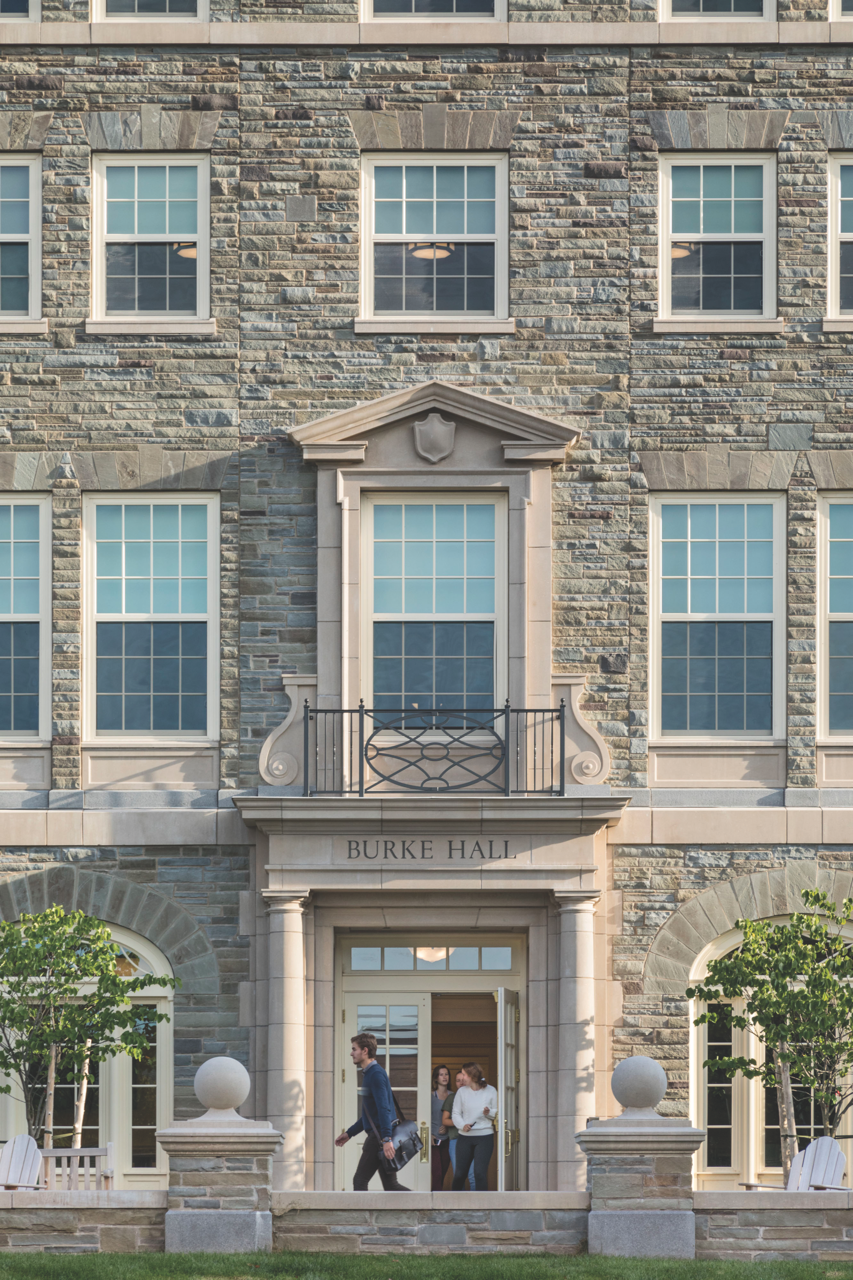
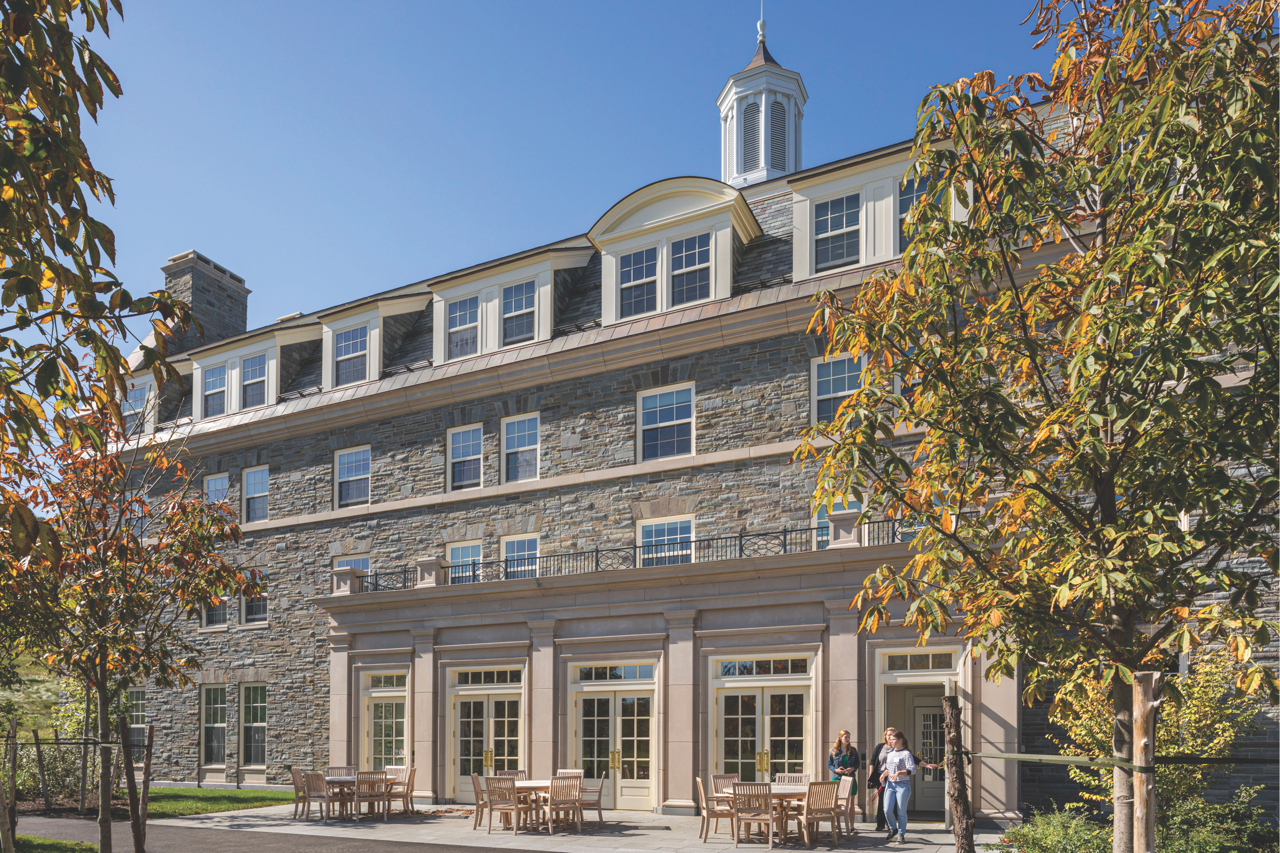
Jane Pinchin and Burke Residence Halls, clad in split-face bluestone ashlar that is nearly an exact match to that of the campus’s historic structures, are sparingly adorned with cast-stone croppings and stringcourses and feature thermally broken aluminum windows with low-E insulated glass, granite water tables, and variegated slate-shingled roofs topped by fiberglass copper-roofed cupolas.
By proposing two buildings, which Gumberich calls “fraternal twins,” instead of a single megastructure, the RAMSA team was able not only to ensure their compatibility with the scale of the other buildings on campus, but also to design an outdoor quad.
Although their style roots them in the university’s architectural history, they are sustainable. In addition to being LEED Gold Certified, they are designed to near Passive House standards. Highly energy-efficient, they display, on giant monitors, daily energy use in real time so students can keep track of and compete on their sustainability measures.
“Jane Pinchin and Burke are vital parts of Colgate’s ongoing strategic plan,” Stern says. “They demonstrate a way forward that respects the past while building a stronger campus community.”
He adds that “the formal relationship of the new residence halls—with one another and with existing campus buildings—is consistent with Colgate’s campus plan and architectural traditions, illustrating how lessons from the past can inspire future growth.” TB
Key Suppliers
Architect
Landscape Designer
Construction Manager
Hayner-Hoyt
Landscape Designer, Quadrangle
Michael Van Valkenburgh Associates
Lighting Designer and Sustainability Consultant
Atelier Ten
Acoustical Consultant
Longman Lindsay



